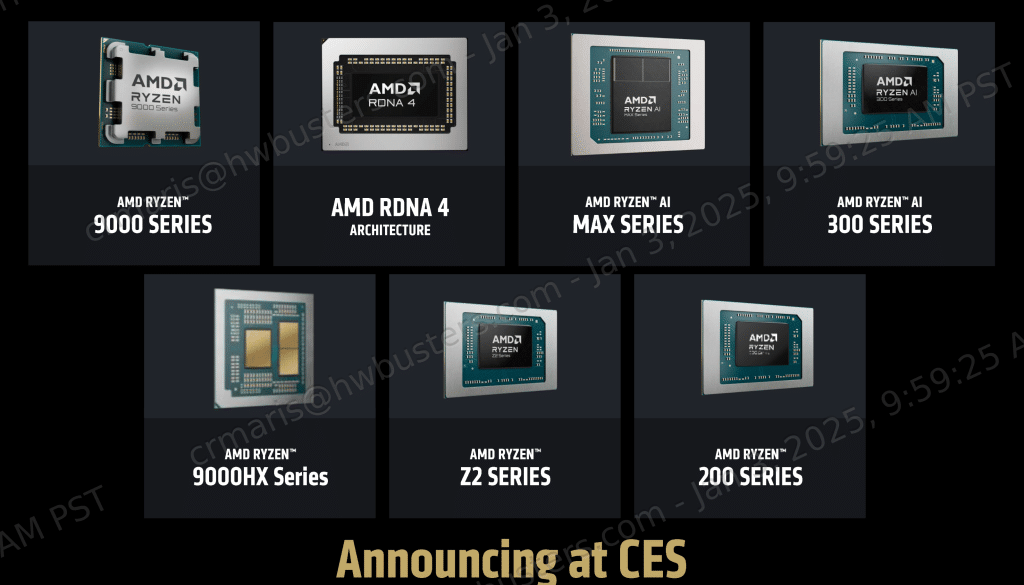The Latest Graphics Cards in 2025: What You Need to Know
The graphics card market in 2025 is more exciting than ever. With new architectures, advanced AI-powered features, and better efficiency across the board, the choices for gamers, creators, and professionals have never been broader. NVIDIA, AMD, and Intel are all competing hard, and each brings something different to the table.
NVIDIA’s RTX 50 Series
NVIDIA has made a huge splash with its RTX 50 series, powered by the Blackwell architecture. These cards push boundaries in raw power and AI-enhanced performance.
At the top sits the RTX 5090, the ultimate GPU for enthusiasts who want nothing less than 4K or even 8K gaming at ultra-high settings. It boasts massive amounts of VRAM, lightning-fast GDDR7 memory, and unmatched ray-tracing capabilities. The RTX 5080 follows closely behind, delivering incredible 4K performance while drawing slightly less power, making it a more practical choice for many gamers.
For those focused on high-refresh 1440p or entry-level 4K, the RTX 5070 and 5070 Ti hit a sweet spot, balancing performance and affordability. Lower in the stack, the RTX 5060 and 5050 target mainstream gamers with excellent 1080p and solid 1440p performance.
NVIDIA continues to lead in AI-driven features. Its DLSS 4 and Multi-Frame Generation (MFG) are standout technologies that let even mid-range cards achieve smooth frame rates by using AI to upscale images and generate frames. For gamers chasing fluid experiences with ray tracing enabled, these features make a huge difference.
AMD’s Radeon RX 9000 Series
AMD’s answer is the Radeon RX 9000 series, built on the RDNA 4 architecture. While NVIDIA dominates ray tracing and AI features, AMD shines in offering excellent performance for the price.
The RX 9070 XT is a high-end competitor designed to challenge NVIDIA’s upper-midrange. It excels in traditional rasterized rendering, making it a fantastic choice for gamers who want raw frame rates without paying a premium. Below it, the RX 9060 XT comes in 8GB and 16GB models, both offering terrific 1080p and 1440p gaming performance at an affordable price point.
AMD’s FidelityFX Super Resolution (FSR) 4 is also evolving, providing its own version of upscaling and performance boosts. While not as refined as DLSS, FSR has the advantage of broad compatibility, working across many games and even on non-AMD hardware.
Intel’s Growing Role
Intel is steadily carving out its place in the GPU market with its Arc Battlemage line. While still behind the two big players, Intel’s focus is on value and accessibility. Its cards are attractive to budget-minded gamers, and rumors suggest Intel is working on multi-frame generation technology similar to NVIDIA’s and AMD’s solutions. If successful, this could make Intel a far more competitive option in the years to come.
Key Trends in 2025
-
Faster Memory – GDDR7 memory is now becoming standard in high-end cards, offering better bandwidth and efficiency compared to GDDR6X. This improves performance in bandwidth-heavy tasks like high-resolution gaming and content creation.
-
Power and Efficiency – Flagship cards like the RTX 5090 still draw enormous power, often pushing beyond 400 watts. However, mid-range GPUs are now more efficient than ever, with many delivering excellent results under 200 watts.
-
AI Features as Standard – Upscaling and frame generation are no longer niche technologies; they’re central to the experience. Even mid-range GPUs now rely on AI-enhancements to achieve smooth gameplay in demanding titles.
-
Value Competition – AMD continues to press hard on offering strong price-to-performance ratios, while NVIDIA emphasizes premium features. Intel, meanwhile, is aiming to shake up the entry-level and mid-range markets.
Choosing the Right GPU
With so many options, choosing a graphics card depends on your needs:
-
Resolution and Refresh Rate – If you’re targeting 4K at ultra settings, the RTX 5090 or RX 9070 XT are strong choices. For 1440p, the RTX 5070 or RX 9060 XT deliver excellent value. For 1080p and esports gaming, even entry-level GPUs now perform incredibly well.
-
Ray Tracing vs. Raw Performance – NVIDIA still leads in ray tracing, while AMD offers outstanding rasterized performance per dollar. Consider how much ray tracing matters to you.
-
AI and Upscaling Features – DLSS 4, FSR 4, and Intel’s upcoming solutions can dramatically improve performance. If you want the smoothest experience in the latest games, these features should play a big role in your decision.
-
Power and Cooling – High-end GPUs run hot and demand a lot of power. Check your case size, airflow, and power supply before investing in one of the larger cards.
-
VRAM and Future-Proofing – More games are requiring higher VRAM, especially at 4K with ray tracing enabled. Cards with 16GB or more will be better prepared for future titles.
Standout Cards in 2025
-
RTX 5090 – The undisputed king of performance, ideal for enthusiasts.
-
RTX 5080 – A more balanced choice for 4K gaming.
-
RTX 5070 Ti – Excellent for 1440p at high refresh rates.
-
RX 9070 XT – AMD’s strong high-end option with great value.
-
RX 9060 XT – A mid-range workhorse perfect for mainstream gamers.
-
Intel Arc Battlemage – Growing steadily in the budget and mid-range segment.
Final Thoughts
The GPU market in 2025 is competitive and diverse. NVIDIA continues to lead in cutting-edge features and raw power, AMD dominates on value and raster performance, and Intel is quietly building momentum as a third player. For consumers, this competition is great news: better technology, more choices, and stronger performance at every budget level.
Whether you’re chasing ultra-smooth 4K with ray tracing, high refresh rates at 1440p, or just reliable performance for everyday gaming, there’s a card in the latest lineup that fits your needs. The real challenge isn’t finding a good GPU—it’s choosing which of the many excellent options best suits your setup and goals.
